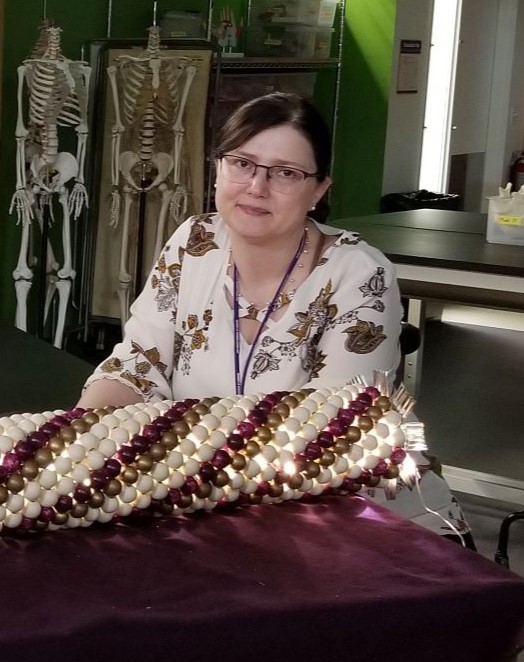Department of Biology Associate Professor Lindsay Dresang strives to build connections in any way she can to help her student navigate intricate subjects. From introductory biology to human dissection and cancer biology, the range of classes she leads requires a versatile knowledge to ensure student success.
 Lindsay Dresang, associate professor of biology, received a 2024 University Excellence in Teaching Award.
Lindsay Dresang, associate professor of biology, received a 2024 University Excellence in Teaching Award.
While students are there to learn the facts and anatomy of the human body, Dresang works to ensure her students build reasoning skills and the confidence to learn how to ask and test their ideas. She encourages students to ask questions in her courses. Mistakes, she explains, can help them break through the barrier of what they may not know yet.
“It’s difficult to create connections when I’m trying to convey difficult concepts,” said Dresang. “I tend to use stories and puns to get the students to chuckle, since laughter is a powerful tool in remembering information.”
Dresang has consistently dedicated herself to improving her courses to be student centered, rigorous and engaging, developing collaborations with both students and colleagues in and outside of the department, engaging numerous undergraduate students in scientific and educational research and continuing to seek opportunities to improve her practice.
Her work and expertise has led to her playing a key role in the development of the Doctor of Physical Therapy (DPT) program, where she teaches the introductory human anatomy course to first-year student physical therapists. This course involves work with human cadavers donated through the UW-Madison body donation program.
“When teaching anatomy labs, I want the students to take some guesses and mess-up, so long as they learn where they went wrong,” said Dresang. “I am a firm believer that their best resource is actually each other.”
Outside of her course load, she has a passion for educational outreach at all levels. Dresang extends this dedication for her field through the coordination of multiple activities ahead of previous science Olympiad tournaments, health care career camps and STEAM days. She seeks to think of new ways to bridge the gap between the community, K-12 students and the university by highlighting the value of science.
Through this project, she has invested countless hours working with undergraduate students to create display cabinets that are relevant, inclusive to all and engaging. She developed outreach materials for first year seminar classes, introductory biology/chemistry classes and tour groups to engage with the content in the displays and understand the value of the contributions to science made by underrepresented groups.
Dresang looks to take on additional mentorship opportunities in the future to explore interesting research projects that are constantly growing and changing. She is also excited about collaborations with the Olson Museum of Natural History to implement more outreach possibilities involving her displays in the Chemistry-Biology Building.